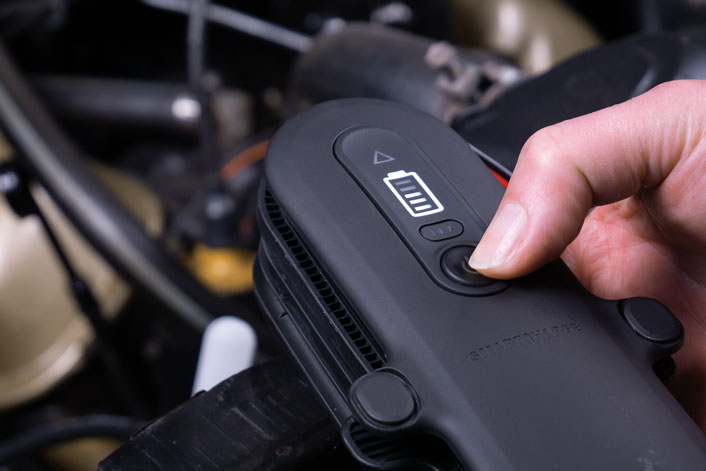Recharging car and motorcycle batteries


Car and motorcycle batteries should actually be fully recharged via the alternator while driving. If more is discharged than the alternator recharges, this leads to a gradual discharge and premature ageing. To compensate for this negative balance, only charging with the charger will help.
You can also watch the corresponding video here:

Directly after the first filling with acid, dry pre-charged batteries only reach 75 to 80 % of their nominal capacity. They must therefore be charged before installation. Even factory-filled and charged lithium batteries can lose charge during storage. We recommend that they are also fully charged before installation.

When driving at low speeds, only in small villages and perhaps with traffic lights, you do not reach the necessary speeds for an effective charge. Short journeys are the number one cause of battery failure because the battery then goes into deep discharge.

A battery produces electricity as soon as it contains electrolyte. And it does this even if it is simply standing around until a chemical reaction is no longer possible. Especially with seasonal vehicles, motorcycles, motorhomes and boats, it is not only annoying if you want to use the vehicle but the battery is empty.

As a rule, vehicle manufacturers try to design the battery in such a way that it is just enough with the available equipment. However, additional consumers are the order of the day: cell phone or iPad for music playback or children's entertainment on the headrest, an additionally installed navigation device, manual seat heating or a seat cushion that I plug in via the cigarette lighter. As soon as you connect additional consumers to the battery, this usually leads to the original battery being overloaded.

Cold and heat play a role in battery performance. It is easy to notice when the vehicle starts to start sluggishly, to emit eggy sounds and to rumble. Then it's time to take care of the recharging.
More on this in our detailed article

Always connect the red cable/terminal to the positive terminal first.
Then attach the gray/black cable/clamp to the negative terminal.

If the charger does not automatically make the correct settings, please adjust the voltage and select the charging characteristic.
In the meantime, observe the LED, display or other indicator on the charger. Is the battery being charged as required?


In reverse order, that is:
First disconnect the gray/black cable/terminal from the negative terminal. 
Then disconnect the red cable/terminal from the positive pole.
